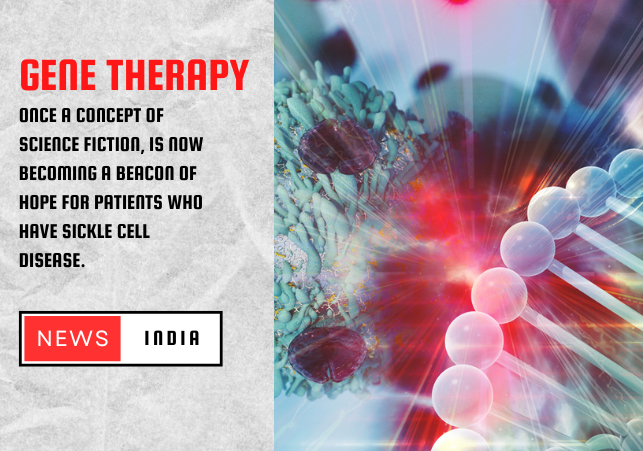Gene Therapy: A New Hope for Sickle Cell Disease Patients Gene therapy,
once a concept of science fiction, is now becoming a beacon of hope for patients who have sickle cell disease. This revolutionary treatment has initiated a new chapter in medical history, particularly in the United States, offering the promise of a life free from the shackles of this debilitating genetic disorder.
Sickle cell disease, a condition characterized by abnormal haemoglobin molecules in red blood cells, has long been a challenge for medical professionals. The agonizing pain, compromised quality of life, and limited treatment options have made it a formidable adversary. However, recent advancements in gene therapy are changing the narrative.
In a groundbreaking move, the United States has embarked on a journey to provide gene therapy to patients battling sickle cell disease. Among them is Kendrick Cromar, a 12-year-old from America whose story epitomizes the transformative potential of this innovative treatment. Like many others, Kendrick has endured unimaginable pain and limitations imposed by sickle cell disease. Simple joys such as riding a bike or playing soccer were distant dreams overshadowed by the spectre of pain.
However, with gene therapy, Kendrick sees a glimmer of hope illuminating his path towards everyday life. The treatment, although in its nascent stages, holds the promise of liberation from the constraints imposed by sickle cell disease. As Kendrick undergoes this revolutionary therapy, the world watches with bated breath, hoping for a successful outcome that could redefine the landscape of healthcare.
The significance of gene therapy in the realm of sickle cell disease cannot be overstated. With millions of individuals afflicted by this genetic disorder worldwide, the need for effective treatment options is more pressing than ever. Gene therapy offers a ray of hope, heralding a new era where sickle cell disease is no longer synonymous with suffering and limitations.
Last year, the approval of two types of gene therapy in America marked a significant milestone in the fight against sickle cell disease. Kendrick Cromar stands as a testament to the efficacy of this treatment, becoming the first commercial patient of Bluebird Bio, a pioneering company in the field of gene therapy. While other companies, such as Vertex Therapeutics, are also exploring gene therapy options, the journey towards widespread accessibility and effectiveness is ongoing.
The road to gene therapy has its challenges. Complex procedures, stringent requirements, and the need for extensive resources underscore the intricate nature of this treatment. Kendrick's journey, starting with the extraction of bone marrow stem cells, exemplifies the meticulous process involved in gene therapy. Bluebird Bio's efforts to genetically modify these cells signify a crucial step towards personalized treatment tailored to each patient's unique genetic makeup.
As Kendrick Cromar's treatment unfolds at Children's National Hospital in Washington, the world watches with hope and anticipation. Months of meticulous preparation and groundbreaking procedures pave the way for a future where sickle cell disease no longer dictates the lives of patients like Kendrick. The journey towards a cure may be arduous, but with each milestone achieved, the promise of a brighter tomorrow grows stronger.
In conclusion, gene therapy offers a beacon of hope for patients battling sickle cell disease, ushering in a new era of possibility and potential. As Kendrick Cromar's story illustrates, this transformative treatment has the power to rewrite the narrative of sickle cell disease, offering patients the chance to reclaim their lives and pursue their dreams with newfound vigour and optimism.






.png)